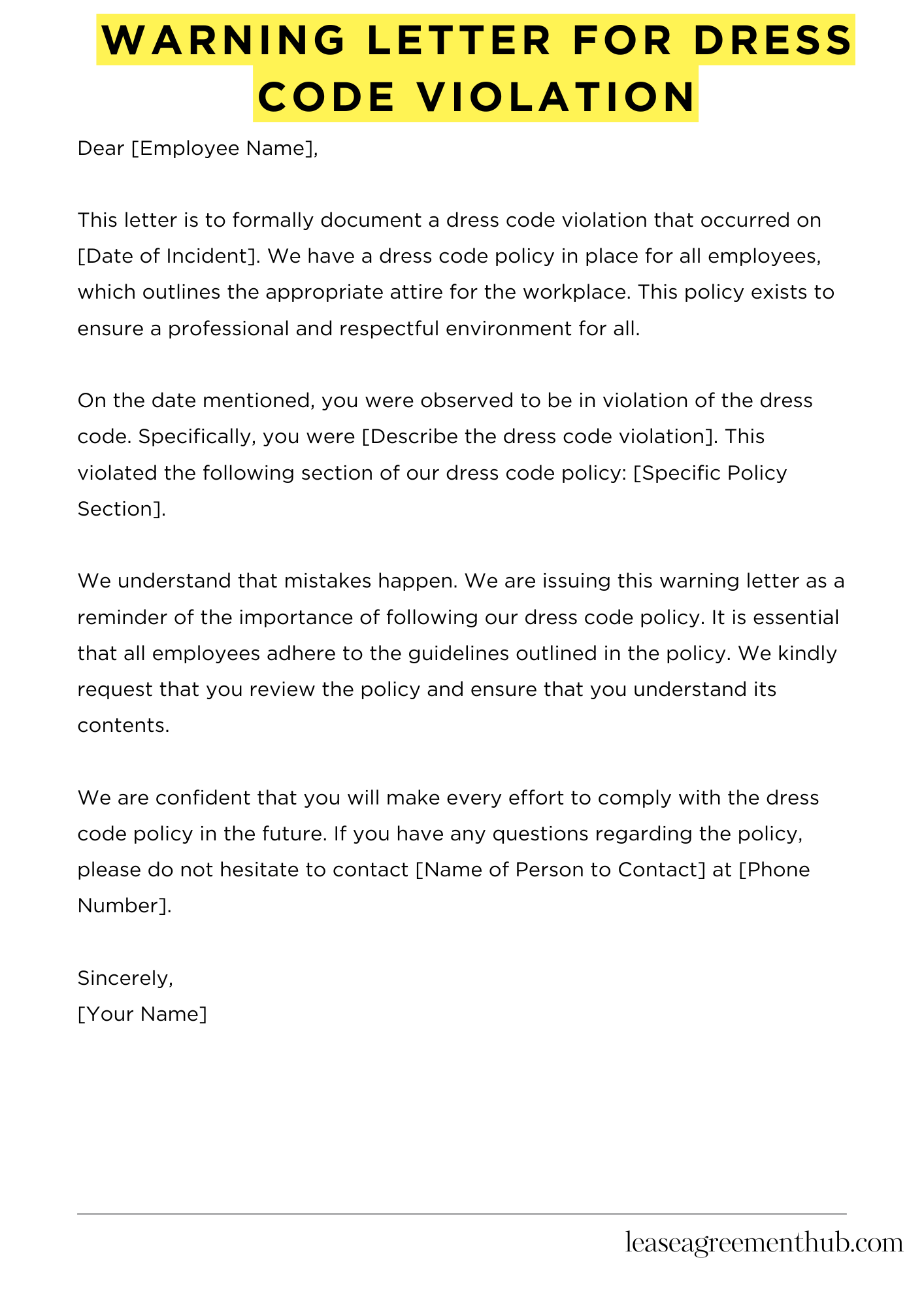A warning letter for dress code violation is a formal notice given to an employee who has not adhered to the company’s dress code policies. Its purpose is to address the issue directly and encourage compliance. This letter serves as a reminder of the expected standards and the importance of maintaining a professional appearance in the workplace.
In this article, we will provide various templates and examples of warning letters for dress code violations. These samples will help users craft their own letters with ease. Whether you are a manager or an HR professional, you will find the tools you need to communicate effectively.
Our goal is to make the process of writing a warning letter straightforward and accessible. With our examples, you can save time and ensure your message is clear. No more struggling to find the right words; we’ve got you covered.
Warning Letter For Dress Code Violation
Date: [Date]
To: [Employee Name]
From: [Your Name]
Subject: Dress Code Violation
Dear [Employee Name],
This letter is to formally document a dress code violation that occurred on [Date of Incident]. We have a dress code policy in place for all employees, which outlines the appropriate attire for the workplace. This policy exists to ensure a professional and respectful environment for all.
On the date mentioned, you were observed to be in violation of the dress code. Specifically, you were [Describe the dress code violation]. This violated the following section of our dress code policy: [Specific Policy Section].
We understand that mistakes happen. We are issuing this warning letter as a reminder of the importance of following our dress code policy. It is essential that all employees adhere to the guidelines outlined in the policy. We kindly request that you review the policy and ensure that you understand its contents.
We are confident that you will make every effort to comply with the dress code policy in the future. If you have any questions regarding the policy, please do not hesitate to contact [Name of Person to Contact] at [Phone Number].
Sincerely,
[Your Name]

How to Write a Warning Letter for Dress Code Violation
Dress codes are a part of many workplaces. They help maintain a professional environment and ensure that employees are appropriately dressed for their roles. Sometimes, employees may violate the dress code, and in these situations, it’s important to address the issue promptly and professionally. A warning letter is a formal way to document the violation and inform the employee about the consequences of repeated offenses. Here’s a guide on how to write a warning letter for a dress code violation:
1. State the Purpose of the Letter
Start the letter by clearly stating the purpose. Be direct and avoid beating around the bush. For example, you could begin with: “This letter is to formally document a dress code violation that occurred on [Date].”
2. Outline the Specific Violation
Be specific about the dress code violation. Don’t just say “inappropriate attire.” Instead, clearly state what the employee was wearing that violated the dress code. For example, “You were observed wearing [specific clothing item] which is not permitted under the company’s dress code.”
3. Explain the Importance of the Dress Code
Briefly explain the reasons behind the dress code. This could include maintaining a professional image, ensuring workplace safety, or creating a cohesive work environment.
4. State the Consequences of Future Violations
Make it clear what will happen if the employee continues to violate the dress code. This could include further disciplinary action, up to and including termination. Be firm but fair in your language.
5. End With a Call to Action
Conclude the letter by reiterating the importance of adhering to the dress code and encouraging the employee to comply in the future. You could also offer to discuss the matter further if the employee has any questions.
Remember, a warning letter should be written in a professional and respectful tone, even though you are addressing a serious matter. It’s important to be clear, concise, and objective in your language.
Related: